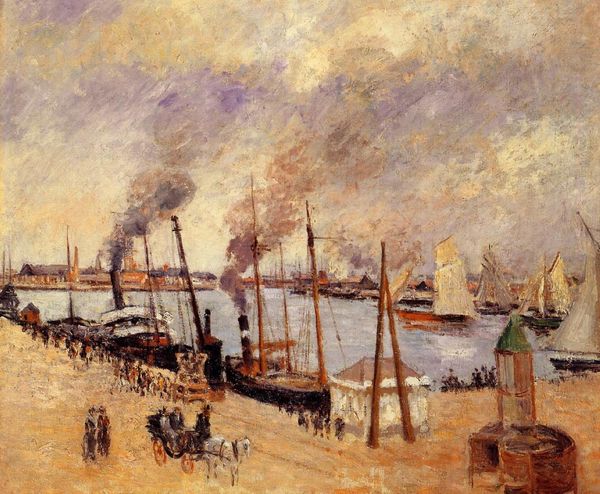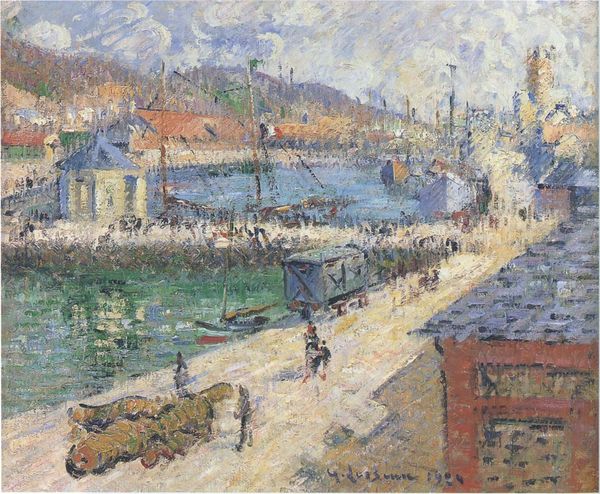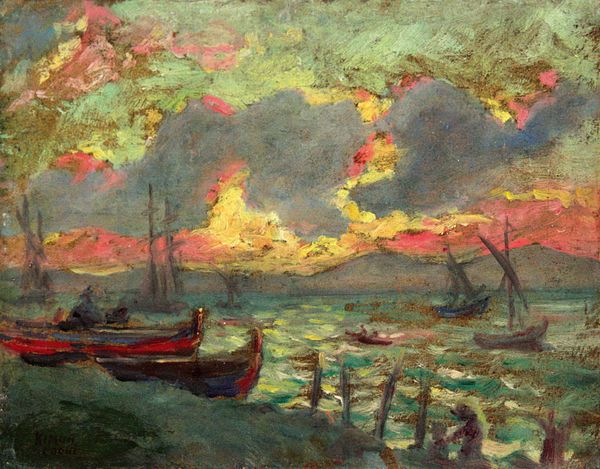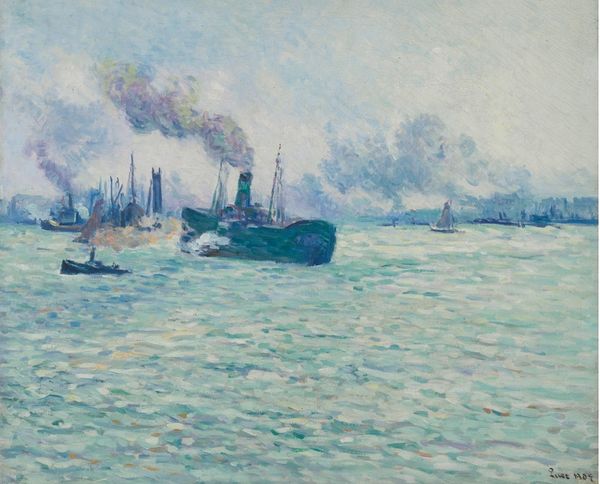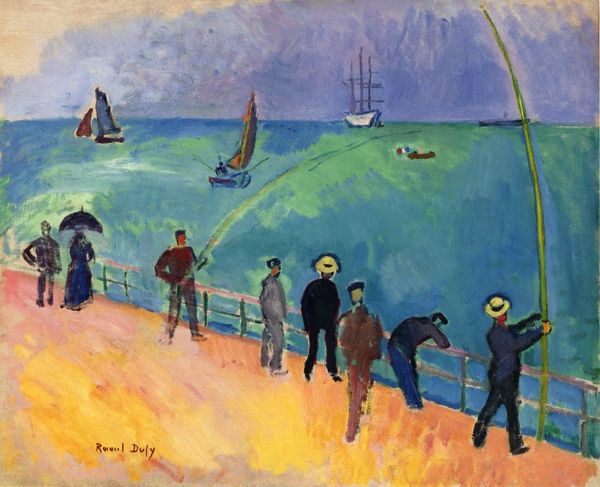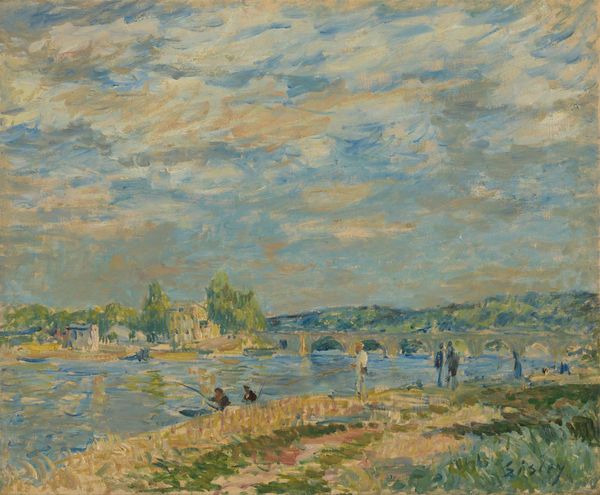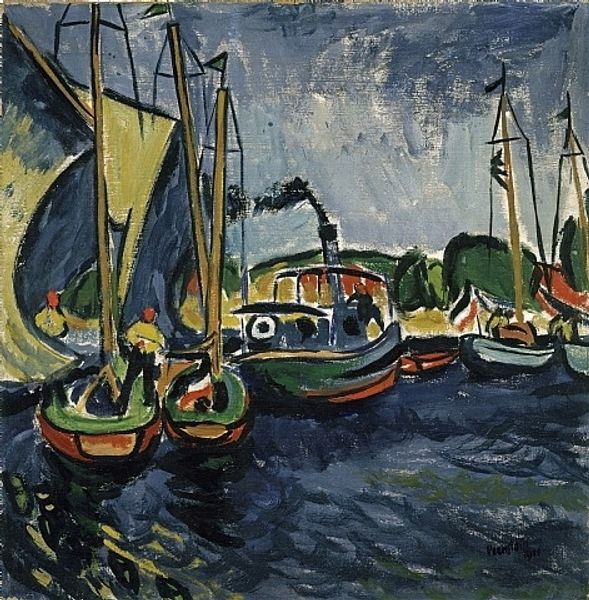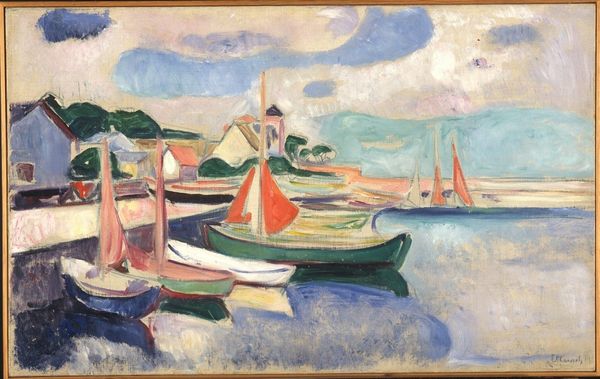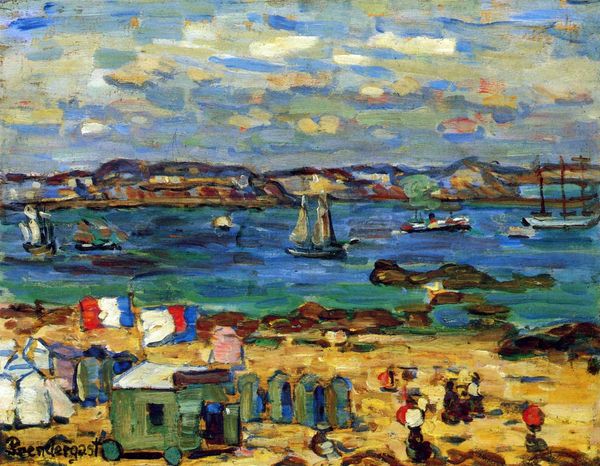
painting, plein-air, oil-paint
#
painting
#
impressionism
#
plein-air
#
oil-paint
#
landscape
#
impressionist landscape
#
oil painting
#
cityscape
Dimensions: 56 x 72 cm
Copyright: Public domain
Editor: So this is "The Seine at Bercy," painted by Paul Cézanne around 1878. It’s an oil painting, and right away, I notice how the blue sky and water dominate the scene. It’s such a busy composition! What do you see in this piece, beyond the initial impression? Curator: The Seine, for Parisians, is more than just a river; it's a mirror reflecting the city's soul and its collective memory. Cézanne captures not just the scene, but also the burgeoning industrial spirit. Notice how the crane looms—it’s almost like a visual shorthand for modernity juxtaposed with the traditional horse-drawn carts. Editor: That’s interesting, the sense of industry versus tradition! I was so caught up in the colours that I didn't immediately see that contrast. Is there a reason Cézanne might be highlighting those elements together? Curator: I think it reflects a society in transition. Water has always been symbolic – fluidity, change, purification – and by painting the Seine at this time, Cézanne shows us a Paris grappling with transformation. The Impressionists weren't just painting pretty pictures; they were capturing a specific moment laden with societal significance. The light itself is symbolic – hope amidst change. What do you make of that? Editor: It's powerful to consider how a seemingly simple landscape can carry so much symbolic weight! Seeing the Seine as a symbol of societal transformation makes me look at the painting with new eyes. I’ll never look at a landscape the same way! Curator: Exactly! That is the beautiful thing about diving into the meaning embedded in artwork; they remind us how objects become more than the physical stuff, but embodiments of the human experience.
Comments
No comments
Be the first to comment and join the conversation on the ultimate creative platform.


